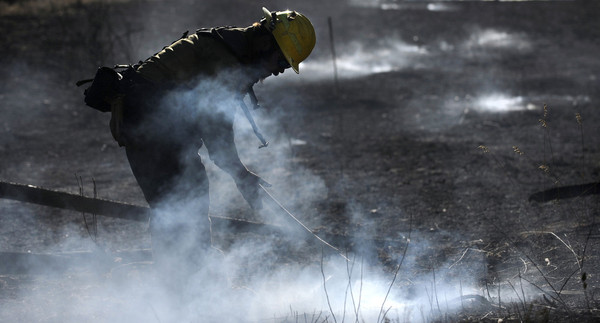A new study led by the University of California, Berkeley, involving the University of Colorado Boulder, shows that the way wildfires around the world are generally dealt with is not making society any less vulnerable to them.
Although, obviously, once underway a wildfire must be directly dealt with, the key lies in the planning and strategy beforehand to decrease human loss.
The study suggests a new way of thinking of wildfires: to treat them as we do other natural hazards- such as earthquakes, severe storms and flooding- by learning to coexist, adapt and identify vulnerabilities. Further, it is indicated that government-sponsored firefighting and land management policies may actually be serving to increase development on inherently hazardous landscapes, in turn leading to an amplification of human losses to wildfires.
“We don’t try to ‘fight’ earthquakes- we anticipate them in the way we plan communities, build buildings and prepare for emergencies. We don’t think that way about fire, but our review indicates that we should,” said lead author Max Moritz of UC Berkeley’s College of Natural Resources. “Human losses will only be mitigated when land-use planning takes fire hazards into account in the same manner as other natural hazards, like floods, hurricanes and earthquakes.”
Research Scientist Tania Schoennagel of CU-Boulder’s Institute of Arctic and Alpine Research, a study co-author, stated in a press release, “We are in dire need of a more sustainable coexistence with wildfire. Unless we plan for fire as an inevitable and natural process, it will continue to have serious social and ecological consequences.”
Research for the study was conducted in three continents: North America, Australia and Europe.
Different kinds of naturally occurring wildfires were studied, what drives them in varying ecosystems, differing public responses and the critical wildland-urban interface. Scientists also analyzed fire data from the western U.S., the Mediterranean Basin and all of Australia.
Schoennagel stated, “We have mostly approached wildfire management from the ecological side through fuel reduction. While this can be effective, it can only achieve so much. To more successfully coexist with wildfire we also need preventative tools, like residential land-use planning, zoning guidelines, fire-resistant building codes and fuel management on and around homes, for example.”
The perception that Colorado’s Front Range fires are becoming increasingly severe has not held up to scientific scrutiny. Schoennagel said in the press release that the rapid expansion of the wildland-urban interface is helping to wreak unprecedented havoc on Colorado homes in the line of fire.
A disturbing trend has been brought to light by the new study. While acreage burned with each fire does not increase, the number of homes burned has. The progression is shown in the following examples: The 2010 Fourmile Canyon Fire in Boulder County burned 167 homes over 6,181 acres, topping the 2002 Hayman Fire which burned 133 homes over 138,144 acres in four counties. The 2012 High Park Fire in Larimer County burned 259 homes over 87,284 acres, followed by the 2012 Waldo Canyon Fire in El Paso County that burned 346 homes over 18,297 acres and the 2013 Black Forest Fire near Colorado Springs, which burned 486 homes over 14,280 acres and holds, as Schoennagel states, “the record for now”.
Schoennagel, who also is affiliated with CU-Boulder’s geography department, went on to explain, “We have learned that forest thinning is rarely effective under extreme burning conditions, and the severity of fire in adjacent forests has little to do with whether a home burns. Solely relying on public forest management to prevent homes burning by wildfire is simply barking up the wrong tree. We need more integrated solutions that cross the public-private land boundary to help us coexist with inevitable wildfire.”
Researchers recommend updating land-use and zoning regulations, as well as updating building codes, implementing vegetation management strategies and evaluating evacuation and warning systems. The research team also recommends the development of plans for surviving “stay-and-defend” fire situations for households and communities, the creation of better maps of fire hazards, ecosystems and climate change effects.
There has been a 60 percent expansion in the wildlife-urban interface (where humans and nature meet) in the western U.S. since 1970 in moderate-to-high-severity fire hazard areas, and those numbers are rising.
Climate change also plays a role in complicating management strategies.
The Nature study also included authors from the U.S. Forest Service, the University of California- Santa Barbara, the Conservation Biology Institute in Corvallis, Oregon, and four research institutes in Australia.
“A different view of wildfire is urgently needed,” said Moritz. “We must accept wildfire as a crucial and inevitable natural process on many landscapes. There is no alternative. The path we are on will lead to a deepening of our fire-related problems worldwide, which will only become worse as the climate changes.”















